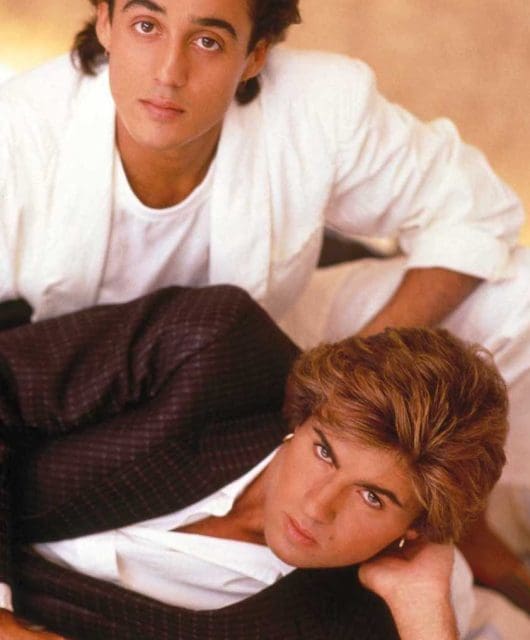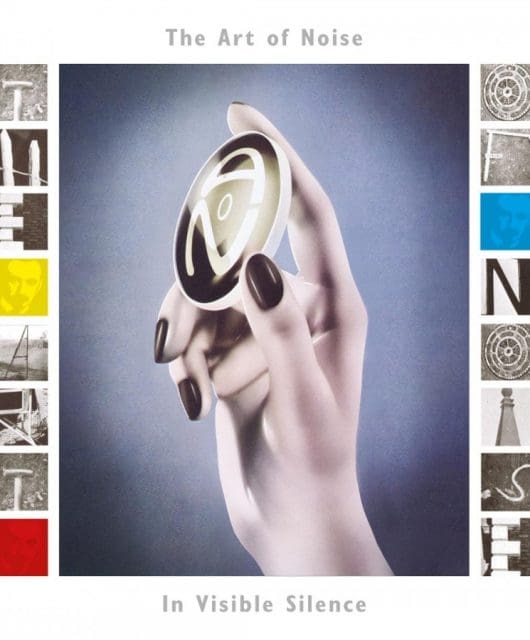The Lowdown – Nile Rodgers
By Classic Pop | November 4, 2022
Before disco became a dirty word, Nile Rodgers and Chic got the world dancing with their irresistible grooves… then funk’s number one “chucker” evolved into the greatest pop Svengali of the past five decades. By David Burke
He’s the man whose signature “chucking” guitar style not only defined the band Chic but the whole disco movement.
Yet guitarist Nile Rodgers went on to transcend the genre and become a pop music chameleon, helming multi-million-selling albums by Diana Ross, Madonna, David Bowie and Daft Punk.
Bronx native Rodgers was working as a touring musician for the Sesame Street stage show when he met bassist Bernard Edwards in 1970.
The two subsequently formed The Big Apple Band and worked as back-up musicians for the likes of Ashford & Simpson and Luther Vandross.
In 1977, Rodgers and Edwards renamed the group Chic and found their metier in the disco craze that began in America’s urban nightclubs before going global.
They racked up a string of hits, among them Le Freak, I Want Your Love and Good Times and their success resulted in Atlantic Records offering Rodgers and Edwards the chance to work with any act on its roster.
The pair plumped for Sister Sledge, and oversaw Top 10 entries He’s The Greatest Dancer and We Are Family.
The Chic Organization was in demand and by 1980 they had masterminded Diana Ross’ Diana album, a collection that yielded the hits, I’m Coming Out and Upside Down.
Chic disbanded in 1983, but the band’s dissolution meant Rodgers could concentrate on production and his fledgling solo career.
The former proved more lucrative, as he applied his Midas touch to Bowie’s Let’s Dance, Madonna’s Like A Virgin and Duran Duran’s Notorious, as well as releases by Mick Jagger, Thompson Twins, Sheena Easton and Grace Jones.
Rodgers and Edwards reformed Chic in the early-90s, recording Chic-ism in 1992. However, following a concert at Japan’s Budokan in April 1996, Edwards fell ill and later died.
Rodgers has carried on the Chic legacy and continued to collaborate with other artists including Daft Punk, Lady Gaga and Kylie Minogue. In 2017, Rodgers was inducted into the Rock & Roll Hall Of Fame.
The must-have albums
CHIC – CHIC, 1977
The story goes that the inspiration for Chic came after Nile Rodgers saw British glam rock outfit Roxy Music live. He wanted a group whose music and image would be a sensual experience.
With this objective in mind, Rodgers and Bernard Edwards recruited Tony Thompson on drums, keyboardist Raymond Jones and vocalist Norma Jean Wright.
The template for Chic was a demo tape the quintet had recorded with young engineer Bob Clearmountain. It featured Dance, Dance, Dance (Yowsah, Yowsah, Yowsah) and Everybody Dance, with an impressive cast of singers including Luther Vandross.
Only one of the seven tracks clocks in at under four minutes. It’s all about the grooves, and the production is capacious enough to allow them to evolve, not least on the aforementioned tracks which became hit singles.
CHIC – C’EST CHIC, 1978
C’est Chic did everything its predecessor established, only with more momentum. The floor-fillers this time around were two of their most enduring numbers: Le Freak and I Want Your Love.
Rodgers and Edwards proved they not only had their fingers on the disco pulse but were actually dictating it.
It’s not all dance-heavy, though, as illustrated by Savoir Faire and At Last I Am Free. Rodgers’ string arrangements are exquisite and the contributions from Vandross, alongside David Lasley, Alfa Anderson, Luci Martin and Diva Gray, are peerless.
Critic Richard Williams was a fan. Writing in Melody Maker, he suggested that what really got up the noses of disco-haters about Chic, was that: “Beneath the attractive surfaces, this music is useful”. He neglected to add that it was also irresistible.
CHIC – RISQUÉ, 1979
Chic drag disco over to the dark side on Risqué, an album which arguably stands as their most potent artistic declaration. In some ways it’s a danceable meditation on despair replete with some seriously funky hooks, not least on Good Times.
“It was all about authenticity,” said Rodgers of the record. “During the Harlem Renaissance, people who were descendants of slaves came up with their own class system and royalty to beat this – Duke Ellington, Count Basie, King Pleasure.
“We were paying tribute on Risqué to people who were oppressed and not having any voice, apart from their music and their art. Everything had to fit the vibe.”
Highlights include A Warm Summer Night, which is six minutes of unresolved yearning, and My Forbidden Lover which is pure melodrama.
CHIC – REAL PEOPLE, 1980
By the time of Real People, the disco backlash was at full throttle and the ‘Disco Sucks’ campaign had affected sales. Chic’s fourth album only peaked at No.30 in the US, and didn’t even make a dent on the British chart… The party, it seemed, was over.
“It felt to us like Nazi book-burnings,” said Rodgers. “We thought, this is America, the home of jazz and rock. People were now afraid to even say the word ‘disco’.”
It was a sense of paranoia that is perhaps reflected in the greater reliance on more mainstream rock and R&B influences.
For Rodgers, Real People represented: “A kind of bridge between the old style and what we are aiming for in the future.”
Despite the negativity at the time, Robert Christgau listed it 15th on the year-end list for The Village Voice critics’ poll in 1980.
And the rest…
DIANA – DIANA ROSS, 1980

Diana Ross approached Edwards and Rodgers about writing and producing a hip album that asserted where she felt she was in her life and career at the time.
Diana would become the biggest seller of her career, shifting more than 10 million copies worldwide.
However, the relationship between artist and production duo descended into legal rancour when Ross, unhappy herself with the final cut and warned by an influential New York DJ that disco would do for her, remixed it with the assistance of Motown engineer Russ Terrana.
Edwards and Rodgers threatened to have their names removed from the credits, and unsuccessfully sued the label claiming they were owed money for the original version.
LET’S DANCE – DAVID BOWIE, 1983
Three years after his previous album Scary Monsters (And Super Creeps), David Bowie called on Rodgers for Let’s Dance.
The title track reached No.1 in the UK and the US, while China Girl and Modern Love maintained the singer’s presence towards the top of the charts on both sides of the Atlantic.
According to Rodgers, Bowie showed him a photograph of Little Richard in a red suit climbing into a red Cadillac. “Nile, darling,” he reportedly said, “that’s what I want my album to sound like.”
If flash was what Bowie was after, then flash was what Bowie got. Musos, however, were not amused – Rolling Stone described it as: “The conclusion of arguably the greatest 14-year run in rock history”. Ouch.
LIKE A VIRGIN – MADONNA, 1984
Rodgers was Madonna’s go-to guy when it came to her second album. A huge Chic fan, she was impressed with what he’d accomplished on Bowie’s Let’s Dance.
For his part, Rodgers had seen Madonna at a small New York club and was immediately won over.
He told Time: “I kept thinking to myself, ‘damn, she is a star’. But she wasn’t at the time. I always wanted to work with her, and Like A Virgin seemed like a perfect opportunity.”
He involved Chic alumni Edwards and Tony Thompson, and played guitar himself. “It was the perfect union, and I knew from the first day in the studio,” boasted Rodgers. “The thing between us, it was sexual, it was passionate, it was creativity – it was pop.”
NOTORIOUS – DURAN DURAN, 1986
Internecine warfare meant Duran Duran were reduced to a three-piece – Simon Le Bon, John Taylor and Nick Rhodes – when they recorded the funked-up Notorious.
Rodgers had already mixed the band’s singles, The Reflex and Wild Boys, and so was a natural fit as producer for their fourth album. He also shared guitar duties with future full-time Duran Duran band member Warren Cuccurullo.
“I don’t like to overly take credit for anything, but since they said it first, I think I was the glue that held them together,” Rodgers said in 2011.
Glue or not, his involvement on Notorious was a game changer for the group, taking them out of the teen pop marketplace and into more adult-oriented terrain.
The essential singles
CHIC – DANCE, DANCE, DANCE (YOWSAH, YOWSAH, YOWSAH), 1977
The ‘Yowsah, Yowsah, Yowsah’ subtitle of Chic’s first hit was a nod to Gig Young’s Oscar-winning role as compere in the Sydney Pollack movie, They Shoot Horses, Don’t They?, about the Depression-era dance marathons of the early-30s.
The phrase originated with jazz violinist and radio personality Ben Bernie, known as the Old Maestro, who popularised it in the 1920s.
And popularity was exactly what Edwards and Rodgers were aiming for with this redoubtable crowd-pleaser, which reached pole position in the US disco chart.
CHIC – EVERYBODY DANCE, 1978
Everybody Dance could be described as Chic’s mission statement, with its assertion that: “Dancing helps relieve the pain/ Soothes your mind, makes you happy again.”
Rodgers said: “We wanted to write good-feeling music that was soulful, that had a spirit and a vibe. That was our concept. Happy music.”
That objective had already been achieved on Dance, Dance, Dance…, and was affirmed by its successor. Everybody Dance has been sampled by acts as diverse as Steps and Manic Street Preachers, a testament to the diversity of Chic’s influential reach.
CHIC – LE FREAK, 1978
The story starts on New Year’s Eve, 1977: Edwards and Rodgers were on their way to Studio 54 for a meeting with Grace Jones, but the pair were refused entry – Jones having failed to notify the club’s staff of her guests imminent arrival.
“So, we went back to my apartment and we were seething. We came up with this line – ‘Aaah, fuck off! Fuck off!’ – which we later changed to ‘Freak out’ for the chorus of our next single.
Le Freak went on to achieve sales of seven million and was the first single to claim top spot on the Billboard Hot 100 on three separate occasions. Now that’s some sweet revenge.
CHIC – I WANT YOUR LOVE, 1979
The propulsive I Want Your Love enjoyed a higher chart placing in the UK than Le Freak – buyers compelled, perhaps, by the unwieldy horn and strings pursuing Rodgers’ guitar which built to a point where “the track practically levitates”, as Rolling Stone gushed.
This lament of unrequited love accentuates the melancholy inherent in much of Chic’s lyrics. Typically, that desolation is subdued by music sculpted specifically to activate the senses.
In 2015, Rodgers collaborated with Lady Gaga on a cover of his composition as part of an ad campaign for fashion designer Tom Ford.
CHIC – GOOD TIMES, 1979
“I think Good Times is the song we’re remembered for,” said Edwards of Chic’s second Billboard No.1. The words are predominantly based on Milton Ager’s Happy Days Are Here Again, and also features lines that take their cue from Al Jolson’s About A Quarter To Nine.
Nile has stated that Good Times was a commentary on the US economic downfall at the time, admitting: “Every lyric was a throwback to depression-era songs.”
The Sugarhill Gang co-opted the backing track on their 1979 smash, Rapper’s Delight.
CHIC – MY FORBIDDEN LOVER, 1979
The success of My Forbidden Lover, the second single lifted from Risqué, surprised even its writers. “We didn’t expect that kind of instant reaction,” said Rodgers.
“We’ve found there’s a certain rhythm pattern that happens in there that people dig. It’s the same with all of our hits – a combination of bass and guitar that seems to really get to people.”
My Forbidden Lover has been sampled on Alcazar’s Sexual Guarantee, Luther Vandross’ Shine and The Black Eyed Peas’ Fashion Beats.
- Read more: Nile Rodgers interview
Only for the brave
CHIC – BELIEVER, 1983
Chic’s seventh album and the last to feature the classic line-up before they disbanded. For a group that had enjoyed a glorious run of hits, Believer was notable for its absence of any chart action.
NILE RODGERS – ADVENTURES IN THE LAND OF THE GOOD GROOVE, 1983
Nile’s first solo effort was a commercial and critical failure – something he anticipated: “I knew it was a flop right away. The songs weren’t hooky enough,” he said.
- Want more from Classic Pop magazine? Get a free digital issue when you sign up to our newsletter!


